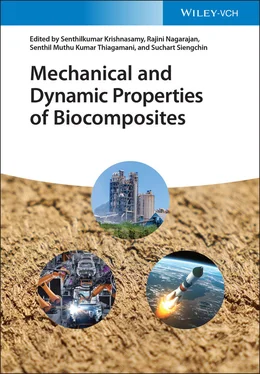167 167
168 168
169 169
170 170
171 171
172 172
173 173
174 174
175 175
176 176
177 177
178 178
179 179
180 180
181 181
182 182
183 183
184 184
185 185
186 186
187 187
188 188
189 189
190 190
191 191
192 192
193 193
194 194
195 195
196 196
197 197
198 198
199 199
200 200
201 201
202 202
203 203
204 204
205 205
206 207
207 208
208 209
209 210
210 211
211 212
212 213
213 214
214 215
215 216
216 217
217 218
218 219
219 220
220 221
221 222
222 223
223 224
224 225
225 226
226 227
227 228
228 229
229 230
230 231
231 232
232 233
233 235
234 236
235 237
236 238
237 239
238 240
239 241
240 242
241 243
242 244
243 245
244 246
245 247
246 248
247 249
248 250
249 251
250 252
251 253
252 255
253 256
254 257
255 258
256 259
257 260
258 261
259 262
260 263
261 264
262 265
263 266
264 267
265 268
266 269
267 270
268 271
269 272
270 273
271 275
272 276
273 277
274 278
275 279
276 280
277 281
278 282
279 283
280 284
281 285
282 286
283 287
284 288
285 289
286 290
287 291
288 293
289 295
290 296
291 297
292 298
293 299
294 300
295 301
296 302
297 303
298 304
299 305
300 306
301 307
302 308
303 309
304 310
305 311
306 312
307 313
308 314
309 315
310 316
311 317
312 318
313 319
314 320
315 321
316 322
Mechanical and Dynamic Properties of Biocomposites
Edited by
Senthilkumar Krishnasamy
Rajini Nagarajan
Senthil Muthu Kumar Thiagamani
Suchart Siengchin

Editors
Dr. Senthilkumar Krishnasamy
Kalasalingam Academy of Research and Education
Department of Mechanical Engineering
Anand Nagar
626126 Krishnankoil, Tamil Nadu
India
Prof. Rajini Nagarajan
Kalasalingam Academy of Research and Education
Department of Mechanical Engineering
Anand Nagar
626126 Krishnankoil, Tamil Nadu
India
Dr. Senthil Muthu Kumar Thiagamani
Kalasalingam Academy of Research and Education
Department of Mechanical Engineering
Anand Nagar
626126 Krishnankoil, Tamil Nadu
India
Prof. Suchart Siengchin
King Mongkut's University of Technology North Bangkok
Department of Materials & Production Engineering
1518 Pracharat 1
Wongsawang Road, Bangsue
10800 Bangkok
Thailand
Cover
Cement plant © Muhammadfath/Shutterstock, Car manufacturer
© xieyuliang/Shutterstock, Cargo Rocket Takes Off © 3D sculptor/Shutterstock, Wood background
© Engin_Akyurt/9440 images/Pixabay
All books published by WILEY-VCHare carefully produced. Nevertheless, authors, editors, and publisher do not warrant the information contained in these books, including this book, to be free of errors. Readers are advised to keep in mind that statements, data, illustrations, procedural details or other items may inadvertently be inaccurate.
Library of Congress Card No.:
applied for
British Library Cataloguing-in-Publication Data
A catalogue record for this book is available from the British Library.
Bibliographic information published by the Deutsche Nationalbibliothek
The Deutsche Nationalbibliothek lists this publication in the Deutsche Nationalbibliografie; detailed bibliographic data are available on the Internet at < http://dnb.d-nb.de>.
© 2021 WILEY-VCH GmbH, Boschstr. 12, 69469 Weinheim, Germany
All rights reserved (including those of translation into other languages). No part of this book may be reproduced in any form – by photoprinting, microfilm, or any other means – nor transmitted or translated into a machine language without written permission from the publishers. Registered names, trademarks, etc. used in this book, even when not specifically marked as such, are not to be considered unprotected by law.
Print ISBN:978-3-527-34626-4
ePDF ISBN:978-3-527-82232-4
ePub ISBN:978-3-527-82234-8
oBook ISBN:978-3-527-82233-1
1 Mechanical Behaviors of Natural Fiber‐Reinforced Polymer Hybrid Composites
Adelani A. Oyeniran1 and Sikiru O. Ismail2
1Cranfield University, Department of Advanced Mechanical Engineering, School of Water, Energy and Environment, Wharley End, Cranfield, Bedfordshire, MK43 0AL, UK
2University of Hertfordshire, Centre for Engineering Research, School of Engineering and Computer Science, Department of Engineering, College Lane Campus, Hatfield, Hertfordshire, AL10 9AB, UK
The use of composites in industrial applications has evolved tremendously over the years, due to the quest for better material performance and cost reduction. They have been found to have exceptional properties in terms of their physical and mechanical properties. Simply put, composites describe a heterogeneous material that comprises two or more different materials that are combined within a single system such that the new material formed now has improved properties, which are suitable for an intended application. The materials that are combined to form a composite material are known as fiber and matrix, reinforcement and binder as commonly called, respectively. The matrix material could be either a natural or synthetic polymer, while fiber material could be glass, boron, or carbon, among others (synthetic type); hemp, jute, flax, among natural type; organic; or ceramic [1]. The increasing use of composite materials in industries has been traced to the fact that they have light weight, and possess high strength as well as exceptional corrosion resistance and acoustic properties, which make them preferred to metallic and alloy materials. Their applications now span into marine, power/energy, automobile, security, aerospace, telecommunications, sport/game, military industries, among others.
Biocomposite has been defined as a composite with at least one of its components derived from biological or natural sources [1]. Their main features that drive research interest are the fact that they are biodegradable, renewable, cheap, and have natural/sustainable resources. These features underscore their environmental friendliness. Some examples of natural fibers frequently used in biocomposites are caraua, sisal, jute, abaca, and kenaf, among others [2]. Other natural fibers used in biocomposites are hemp, agave, and flax, among others [3]. Some natural fibers have been identified in the literature to be used only for craft production and these include kenaf, agave, coir, ramie, and caraua fibers [3].
Table 1.1 Commonly used natural fibers and their mechanical behaviors.
Читать дальше













